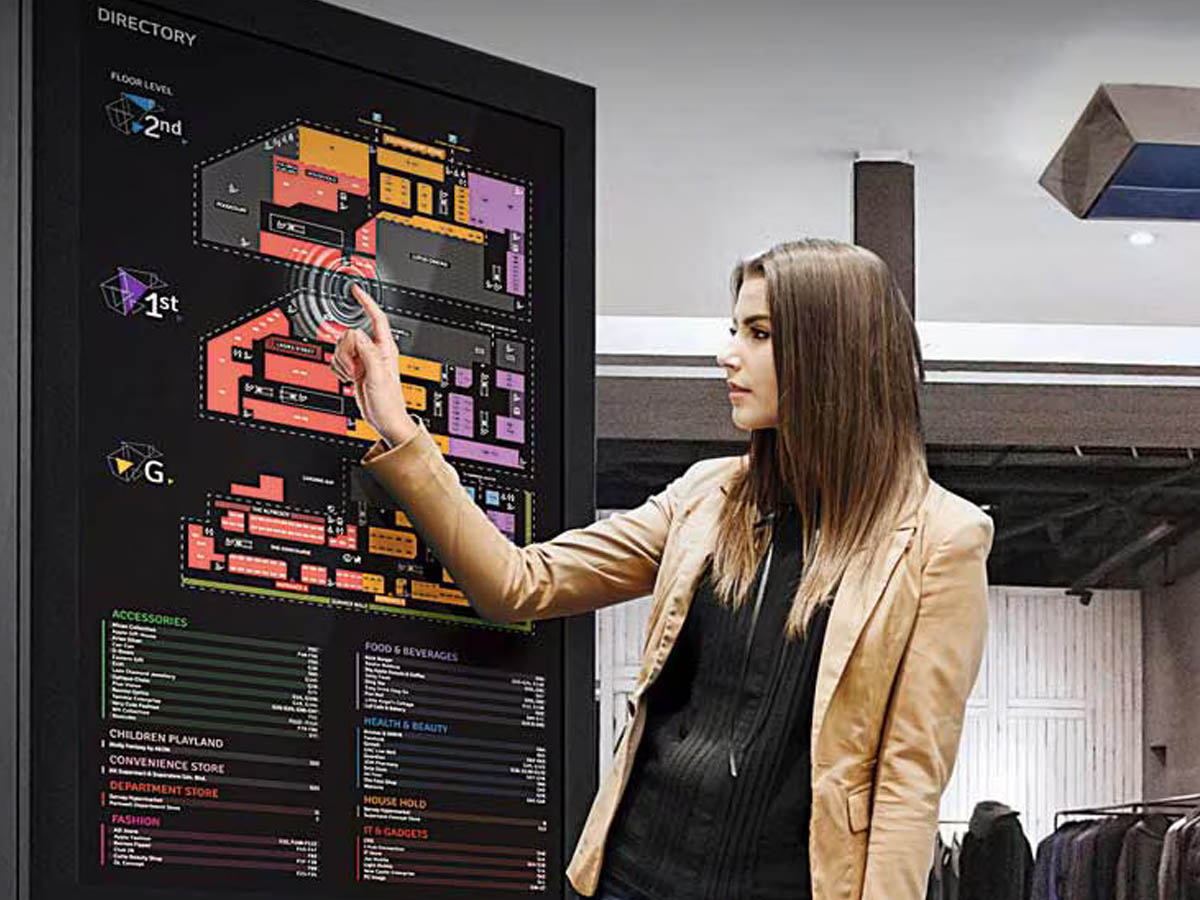Navigating complex environments such as airports, hospitals, campuses, and shopping malls can be a daunting task for visitors. Traditional static signage often falls short in providing clear and intuitive directions. However, with the advent of interactive wayfinding solutions powered by digital signage technology, visitors can now enjoy a seamless and enhanced navigation experience. In this article, we’ll explore how interactive wayfinding is revolutionizing visitor experience and how businesses and organizations can leverage digital signage to create intuitive and user-friendly navigation systems.
- Personalized Directions:
Interactive wayfinding solutions allow visitors to input their destination and receive personalized directions tailored to their specific needs. Whether it’s finding the nearest restroom, a specific store in a shopping mall, or a patient’s room in a hospital, interactive wayfinding offers customized routes that make navigation effortless.
- Real-Time Updates:
Digital signage-based wayfinding systems can provide real-time updates on factors such as traffic congestion, parking availability, and event schedules. By integrating with data sources such as GPS, Wi-Fi, and event calendars, interactive displays can dynamically adjust routes and provide alternative options to help visitors reach their destination efficiently.
- Points of Interest:
Interactive wayfinding solutions can also highlight points of interest along the route, such as restaurants, shops, landmarks, and amenities. By providing additional information about nearby attractions, visitors can explore their surroundings and make the most of their visit.
- Multilingual Support:
Digital signage-based wayfinding systems can offer multilingual support to cater to diverse visitor demographics. By providing directions and information in multiple languages, businesses and organizations can ensure that all visitors can navigate with ease, regardless of their language proficiency.
- Accessibility Features:
Interactive wayfinding solutions can incorporate accessibility features such as audio instructions, braille labels, and wheelchair-friendly routes to accommodate individuals with disabilities. By prioritizing accessibility, businesses and organizations can ensure that their facilities are inclusive and welcoming to all visitors.
- Integration with Mobile Devices:
Many interactive wayfinding solutions offer integration with mobile devices, allowing visitors to access directions and information on their smartphones or tablets. By providing a seamless transition between digital signage displays and mobile devices, businesses and organizations can enhance the visitor experience and provide additional convenience.
- Analytics and Insights:
Digital signage-based wayfinding systems can generate analytics and insights on visitor behavior, navigation patterns, and popular destinations. By analyzing this data, businesses and organizations can gain valuable insights into visitor preferences and behaviors, allowing them to optimize their facilities and improve the overall visitor experience.
In summary, interactive wayfinding solutions powered by digital signage technology offer a powerful tool for enhancing visitor experience and navigation in complex environments. By providing personalized directions, real-time updates, points of interest, multilingual support, accessibility features, integration with mobile devices, and analytics insights, businesses and organizations can create intuitive and user-friendly navigation systems that delight visitors and enhance their overall experience.
Check out how Digital Signage Solutions are changing the dynamics of modern world businesses here.

